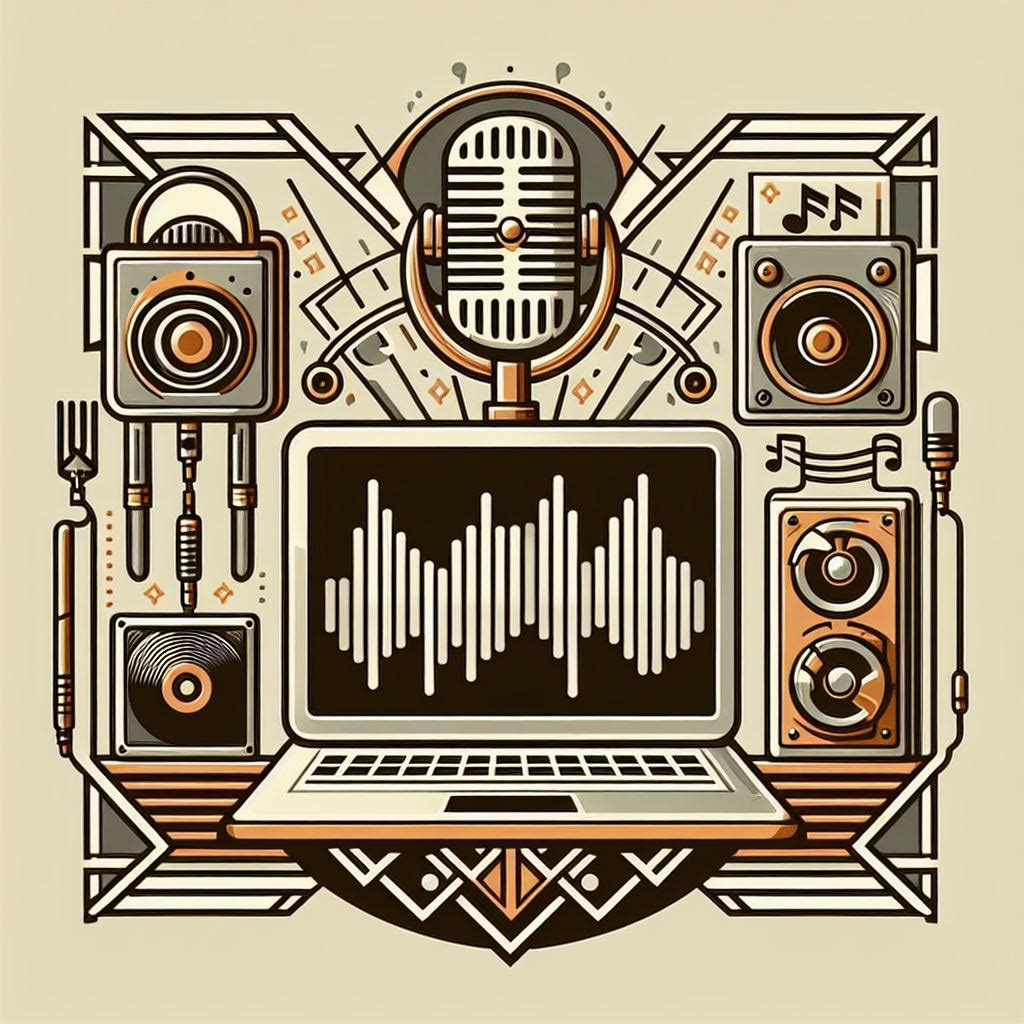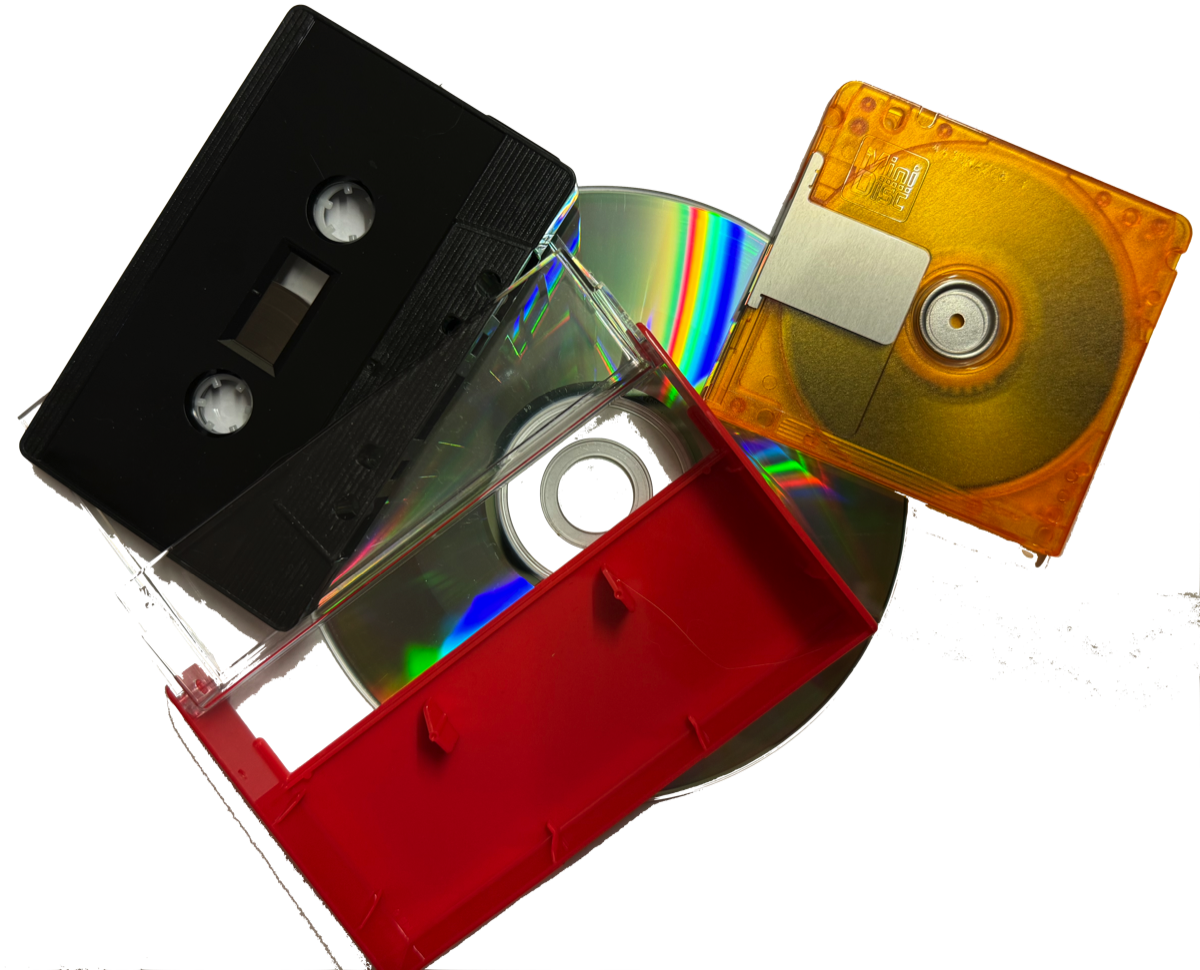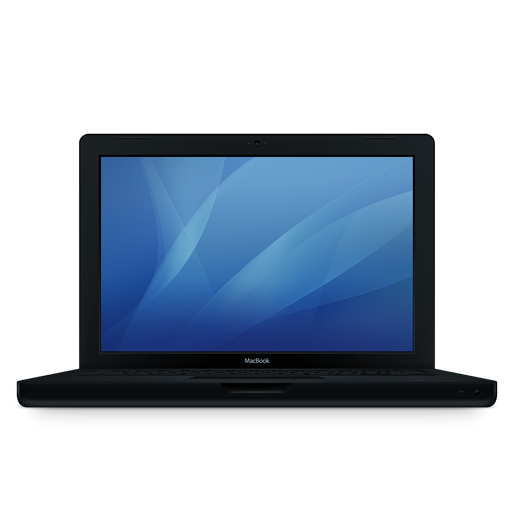Speech and Language Therapy
The UK's longest running speech and language therapy website
Recording a speech sample for later (re-) transcription

Image: Microsoft Co-Pilot, 29/03/2024. https://www.bing.com
Speech and Language Therapists should be sufficiently practised in transcription to transcribe speech 'live'. However, recording an assessment (including a connected speech sample) is helpful for later re-transcription/checking your transcriptions, especially for speakers with moderate to severe speech sound disorder (SSD). It is also useful for comparing the speaker's intelligibility pre- and post-therapy, or completing and outcome measure such as Percentage Consonants Correct (PCC).
Recording equipment

In the past, analogue recording formats such as reel-to-reel and the Compact Cassette were of sufficient quality to record speech. Unfortunately, cassette is now rare and high quality formats such as Chrome and Metal cassettes are unavailable.
Digital recording was initially available in the MiniDisc format. This was the period before electronic recording directly to a computer or digital audio recorder was possible. For a short period, recordable CDs were available.
All these physical formats have now given way to Digital Recording. Digital audio recording is possible direct to a PC or Mac using a USB condenser microphone and free software.
Stand alone Digital Audio Recorders

Digital audio recorders often have built-in stereo microphones and record lossless, high quality .WAV files to a memory card or built-in memory. These can then be downloaded to a PC or Mac computer via a USB cable or even over Wi-Fi.
You don't need to spend a huge amount on a digital audio recorder. Prices currently at around the £90 mark. For example, the TASCAM Stereo handheld recorder (I cannot recommend or advise on individual retailers or models and quote this as an example device and retailer. Please carefully research different devices to meet your needs before purchasing).
Advantages:
- Portable
- Small and unobtrusive when recording a child or young person
- High quality, stereo recording.
Disadvantages:
- Need to download/transfer recordings to a computer
- Not encrypted - must be carefully locked away and audio files transferred to a secure, encrypted computer
Recording audio direct to a PC or Mac
If you carry around a laptop, or see clients in a dedicated assessment/therapy room, you may prefer to record audio directly to your computer. You can use free software to record in lossless, high quality format (.WAV).
You will need:
- A high quality condenser microphone such as this one. Consider if a desk microphone or headset will be best (some children and young people will not tolerate a headset).
- Optionally, an audio amplifier (if the microphone(s) are standard and not USB).
- Recording software. Audacity is free (see download link, below), and other alternatives such as Sound Studio are low cost and have excellent features.
- A computer with a sound card.

Audacity is a free sound recorder for your computer. It is capable of recording and saving in lossless .WAV format.
I recommend Sound Studio 4 as a paid alternative to Audacity. I prefer the editing, which I find easer. Costs around £49.99 (May 2023).
Computers should be protected with a complex password and recordings only made and retained with express consent and in line with Data Protection legislation. If you work for an organisation, your IT security and Data Protection policies should be consulted and implemented.